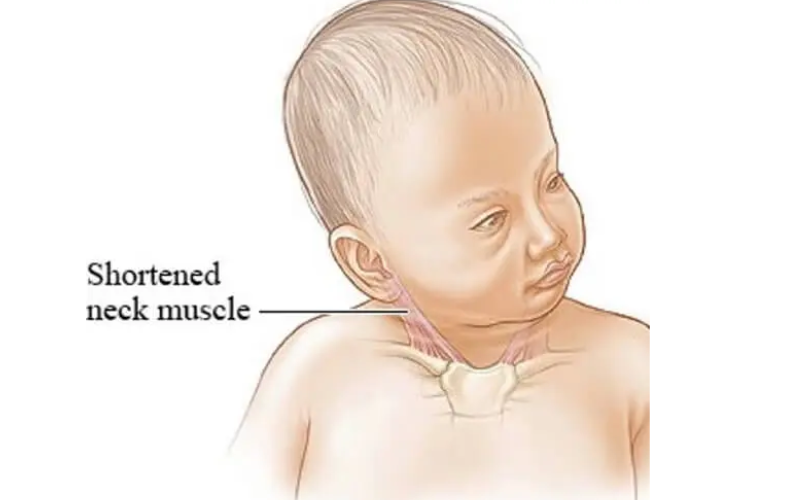Plagiocephaly and torticollis are two abnormalities that can affect infants and toddlers and are common sources of distress for their parents. This article will discuss the diseases mentioned above, including their origins, symptoms, and medical care.
What is Torticollis?
Torticollis, a condition characterized by an involuntary twisting or tilting of the neck, is also known as a wry neck. It usually presents as a little sway to one side of the head. Torticollis at birth is rare, but it can develop later in infancy. Muscle imbalances, abnormal positioning in the womb, and birth trauma are all possible causes of torticollis, but the underlying cause is not usually identified.
Symptoms of Torticollis
The most noticeable symptom of torticollis is a sideways tilt of the head. Some other common symptoms include:
- The child may have difficulty turning their head to the left or right due to the restricted range of motion.
- Muscles in the neck that are too rigid or tight might cause discomfort.
- Babies with torticollis may have trouble looking in the opposite direction, so they may favor looking in one direction while they play.
What is Plagiocephaly?
One symptom of plagiocephaly, often known as “flat head syndrome,” is a noticeable flattening of the head, most often on one side. It can be brought on by external stressors on the skull during infancy, such as lying still for lengthy periods of time or putting a lot of weight on one side of the head. Because the head tilt can lead to uneven pressure on the skull, torticollis and plagiocephaly are linked.
Symptoms of Plagiocephaly
The hallmark of plagiocephaly is an abnormally lopsided head shape. Additionally, these may be signs:
- One side of the head may appear flatter than the other, creating the illusion of asymmetrical roundness.
- The child may have slightly crooked features and an uneven face.
- Plagiocephaly can restrict an infant’s range of motion, making it difficult for them to turn their heads to the side.
- Treatments and Possible Diagnosis
- Torticollis and plagiocephaly are often detectable with a standard medical examination. Treatments for these conditions aim to address their root causes while also promoting normal growth and development.

Physical Therapy
Physical therapy is often used to treat torticollis. It consists of light stretches, techniques for improving posture, and strength training to improve the strength and flexibility of the muscles of the neck. The physical therapist will work closely with the family to develop a customized therapy plan.
Therapy with Helmets
In cases of moderate to severe plagiocephaly, a helmet treatment may be recommended. Using a custom-made helmet or cranial orthosis, gentle, constant pressure is applied to the affected parts of the head. The best outcomes are seen when helmet therapy is started as early as feasible, between the ages of 4 and 12 months.
Repositioning Techniques
Babies with mild plagiocephaly may benefit from modifying techniques. These therapies entail repositioning the infant during play and sleep to alleviate pressure on the depressed areas of the baby’s head. The use of pillows and other supports, as well as a shift to sleeping on one’s stomach, can all contribute to better head alignment.
Surgical Intervention
In extremely unusual cases where non-surgical treatments have been ineffective, surgery may be considered. Surgery for torticollis aims to address spinal issues or release tight neck muscles. Plagiocephaly surgery may involve correcting the skull’s form or addressing any underlying cranial defects. In most cases, surgical intervention is reserved for when all other options have been exhausted.
Conclusion
An infant or young child’s health may be affected by plagiocephaly and torticollis. Prompt diagnosis and appropriate therapy are critical for the management of many conditions. Physical treatment, helmet therapy, repositioning operations, and in some cases surgical intervention can help alleviate symptoms and promote healthy growth and development. If you suspect your child has plagiocephaly or torticollis, you should seek the opinion of a medical professional to determine the condition and the best course of treatment.

